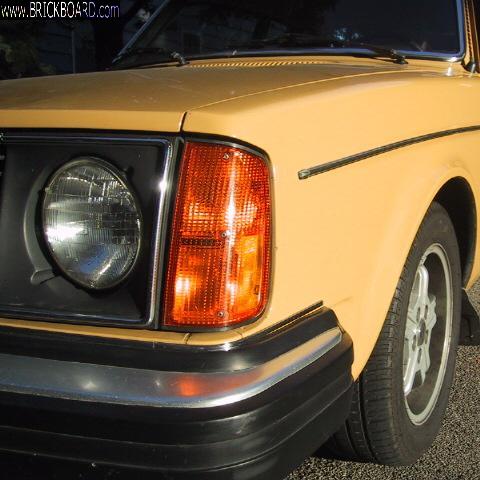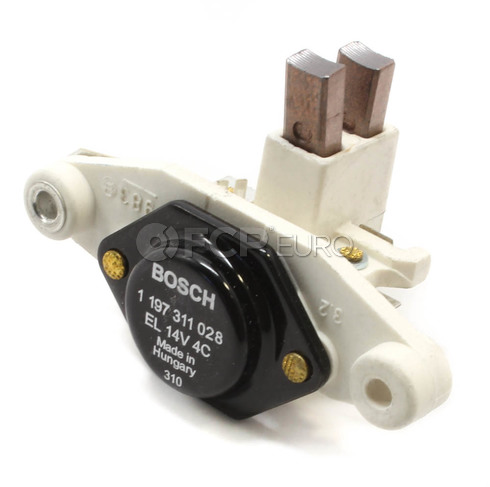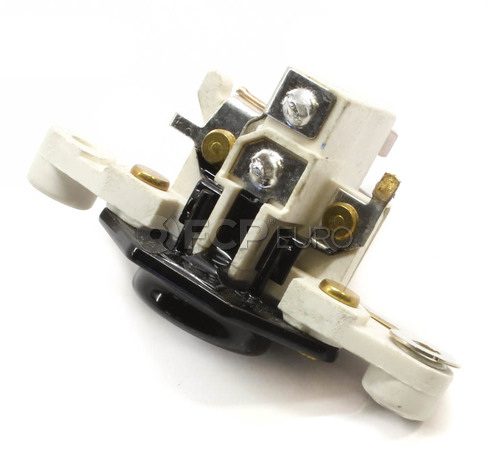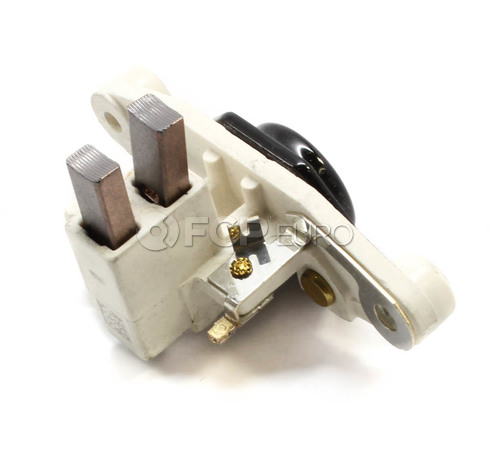|
|
|
Hey Team-
I have a 1979 245.
Since Since I have owned her (10 Years now), the lights have pulsed. Not a blinking, but a noticeable pulse from bright to not as bright.
you can notice it also in the interior light display and the radio face plate.
The speed of idle makes no difference - its always pulsing.
Has anyone experienced this? and if so, what fixed it? I was thinking a new alternator with a higher amperage? converting from an external voltage regulator to internal?
Thanks
--
1979 245 DL
|
|
-
|
|
|
I had that occur in an old GM car in my youth (5-1/5 decades ago). It was the voltage regulator. I assume that you have an external, electromechanical regulator, rather than a solid-state internal regulator inside your alternator.
As proof, simply put a VOM meter on your battery: I'll bet the voltage fluctuates with the dim/brightening of your lights.
|
|
-
|
|
|
Ken- Super interesting - So i went out and took a look and yes, the voltage at the battery bounced around between 13.96 an 14.4. It bounced less with less things on, and bounced more with all the lights and radio and fan on-
is that the test for a bad Voltage regulator?
--
1979 245 DL
|
|
-
|
|
|
Actually, the operating voltage should be steadier -- you shouldn't have a 0.4 volt variation.
In addition, it shouldn't be as high as 14.4 (or even 13.96) anyway -- unless these are your measurements just when you started up the engine cold. As the engine compartment warms up and the battery finishes it's bulk charge phase (to replace the starter cranking energy it just spent), the regulated voltage should tamp down to mid 13 as a maximum; otherwise, you're overcharging the battery.
I'd look into replacing the voltage regulator.
|
|
-
|
|
|
Yes, I had just started the Car, it was not warm, and I used a VOM on the bat to get the measurements.
I think I agree with changing the Voltage regulator - but what I'd really like to do is convert it/ upgrade it to an internal regulated.
Frankly, if I can go from a 55 to a 70 amp, that would be all the better also.
Especially If I can do that by swapping out the the brush pack with an internal type (the only available from IPD) then that would be awesome.
Otherwise, I suppose I can get an ACDelco external 55 amp regulator from ORilies - Which Could be fine I guess.
--
1979 245 DL
|
|
-
|
|
|
No you can't upgrade the amperage just by replacing the regulator pack. There are more to it. The number of coil windings and rectifier (diode) are more in high amperage alternator. A 55A alternator may have 6 diodes but 120A versions have 12 to 14 diodes.
The only best deal you can get with regulator is that you get the output adjustable type. There is slight difference in the charging voltage needed for sealed maintenance-free battery than the usual wet type.
Amarin.
|
|
-
|
|
|
ok- so the adjustable regulators adjust output voltage, and if i want more amps, I need to drop in a later model alt.
Ok- that makes sense.
thanks
--
1979 245 DL
|
|
-
|
|
|
You wrote, "... if I can go from a 55 to a 70 amp, that would be all the better also. Especially If I can do that by swapping out the brush pack with an internal type ... then that would be awesome...."
I may be misunderstanding your comment, and please pardon me if I have, but I should say that you would be wrong thinking that you can convert a 55 amp to a 70 amp just by swapping the brush pack/regulator unit.
|
|
-
|
|
|
Right.
I've seen adjustable voltage regulators and was wondering if that was the major difference between what I have, a 55 amp alternator, and what later models have, a 70 amp alt. and being able to get 70 amps by changing the regulator, and not the whole alternator.
--
1979 245 DL
|
|
-
|
|
|
The voltage regulator only controls voltage. In fact, I've seen adjustable voltage regulators (internal type, for the later alternators) meant for cases where the car's system voltage must be kept slightly higher (year-round cold climate, different kind of battery, etc.).
But merely setting the voltage higher cannot deliver a reliably higher amperage, 55 to 70 amps. It might seem that way from a cursory view of ohm's law -- i.e., amps seems to simply be a function of the load's resistance and the voltage applied, so theoretically it would require going from 13.5 volts to just over 17 volts to raise the amperage you want -- but this impractical. First, simply raising the voltage will eventually (actually, very quickly) "cook" the battery -- wet cells are not able to survive when kept at higher voltages indefinitely (even though it's optimum voltage is temperature dependent). And second, the car's own electronic controls (ICU, ECU, ABS, SRS) will not prosper at such high voltages.
But the main problem is that the alternator physically cannot sustain, reliably, a delivery of current higher than it is designed. For more amperage at the recommended voltage, you need different diodes, coils wound in the alternator housing, etc. (together with better cooling capacity -- alternators generate heat proportional to their delivery of current -- those fan blades on the pulley are there for a reason*). A good rebuilding shop can rebuild your alternator to a higher delivery, but it isn't as simple as setting a different external voltage regulator or internal regulator/brush set combination.
[ * in fact, on a Mercedes I used to have as an illustration of the cooling problem, the alternator was equipped with an air duct that provided cooling air from behind a firewall behind the engine compartment.]
Replacing a bad external regulator is easiest. Substituting an internally regulated unit with the brush set (as suggested elsewhere) is a little bit more challenging, but not formidable, because of the rewiring required. But you nevertheless want to adhere to the recommended voltage levels for the sake of your car's many systems, not to mention the lifespan of your battery.
But if you really need a reliable 70 amps for your '79 240, then you have to upgrade your alternator. But what would you need in a 1979 car? Likely, the A/C compressor isn't being used (I'm guessing that your A/C system can't hold Freon anymore); you may, of course, have two or even four e-code headlights running 150W bulbs (and if so, for your car's wiring's sake, I hope you're using a relayed wiring harness for them), but the only OEM big amp user, otherwise, is your rear window defroster and maybe your fan if you run it on "3" all the time. So the only possibility left is if you have an aftermarket radio with a gigantic amplifier and speakers.
|
|
-

|
|
If you can own a 240 for 10 years without doing some service to the alternator, you must have only put 10000 miles on it in that time. :)
I expect, because it has pulsed for that long, it is indeed the slip rings or brushes - an alternator fault, but just in case, be sure to spin fuse 13 before doing anything intensive.
--
Art Benstein near Baltimore
The short fortune-teller who escaped from prison was a small medium at large.
|
|
-

|
|
Guess my '79 has had an alternator with integrated regulator so long now, it has forgotten what it was like before.
What this means for you, is I don't know if you have a Bosch like mine or a Marchal alternator. With the Bosch I have, the brush kit is just swapped out for the one with internal regulator. Whether you would need to replace the entire unit is a question which deserves an answer from someone more experienced than I am. That someone will find your post.
Oops. Replied to myself. :)
--
Art Benstein near Baltimore
Merry Christmas!
|
|
-
|
|
|
Art,
Thanks for the Advice - i regularly clean and spin my fuses - so, im not sure that is an issue.
Do you know how hard it would be to convert the Alt to an internal regulator type? or anything I should Look out for when doing so?
Thanks-
--
1979 245 DL
|
|
-

|
|
Guess my '79 has had an alternator with integrated regulator so long now, it has forgotten what it was like before.
What this means for you, is I don't know if you have a Bosch like mine or a Marchal alternator. With the Bosch I have, the brush kit is just swapped out for the one with internal regulator. Whether you would need to replace the entire unit is a question which deserves an answer from someone more experienced than I am. That someone will find your post.
--
Art Benstein near Baltimore
Merry Christmas!
|
|
-
|
|
|
Art,
Just went out and looked - it's a Bosch alt. a reman from before I owned the car.
--
1979 245 DL
|
|
-
|
|
|
For 1979 that is likely the 55W if I remember correctly. Just get the internal regulator brush plate and hook all wires directly to the alternator that used to be on the external regulator...it really is that easy.
|
|
-
|
|
|
onkel- i guess i am a little confused.
The only wires on the Brush plate only go to the regulator - there are 3. all the other wires on the Alt, go to the car.
would that mean then I can just swap out the brushplate to one that is for an internal regulated alt? Is the Regulator built into the Brush plate? IF so I should have done this YEARS ago!
thanks
--
1979 245 DL
|
|
-
-
|
|
|
BulletProof-
That is awesome. Thank you.
--
1979 245 DL
|
|
|
|
|





